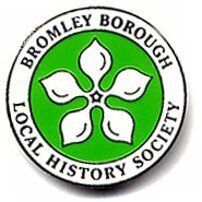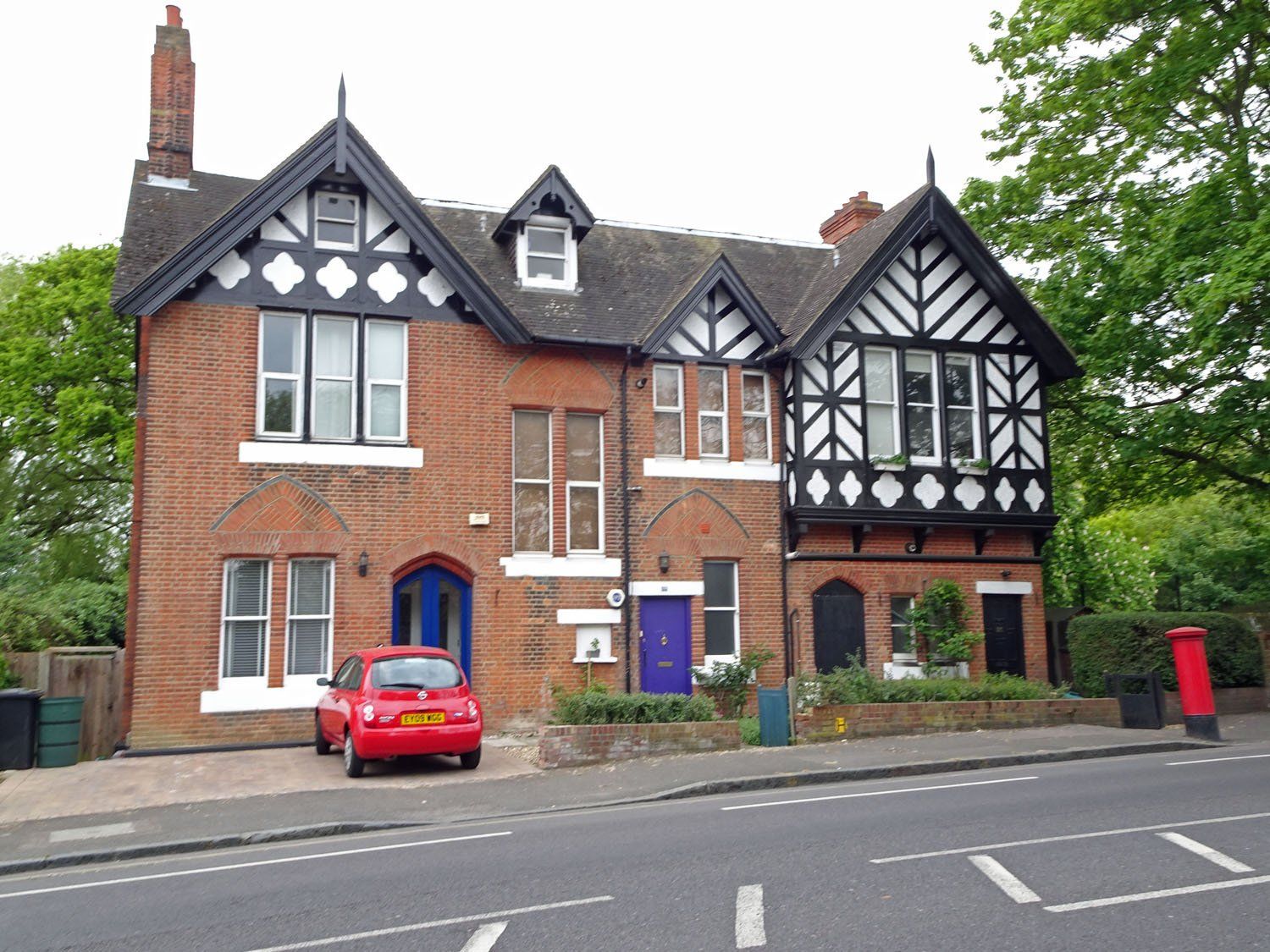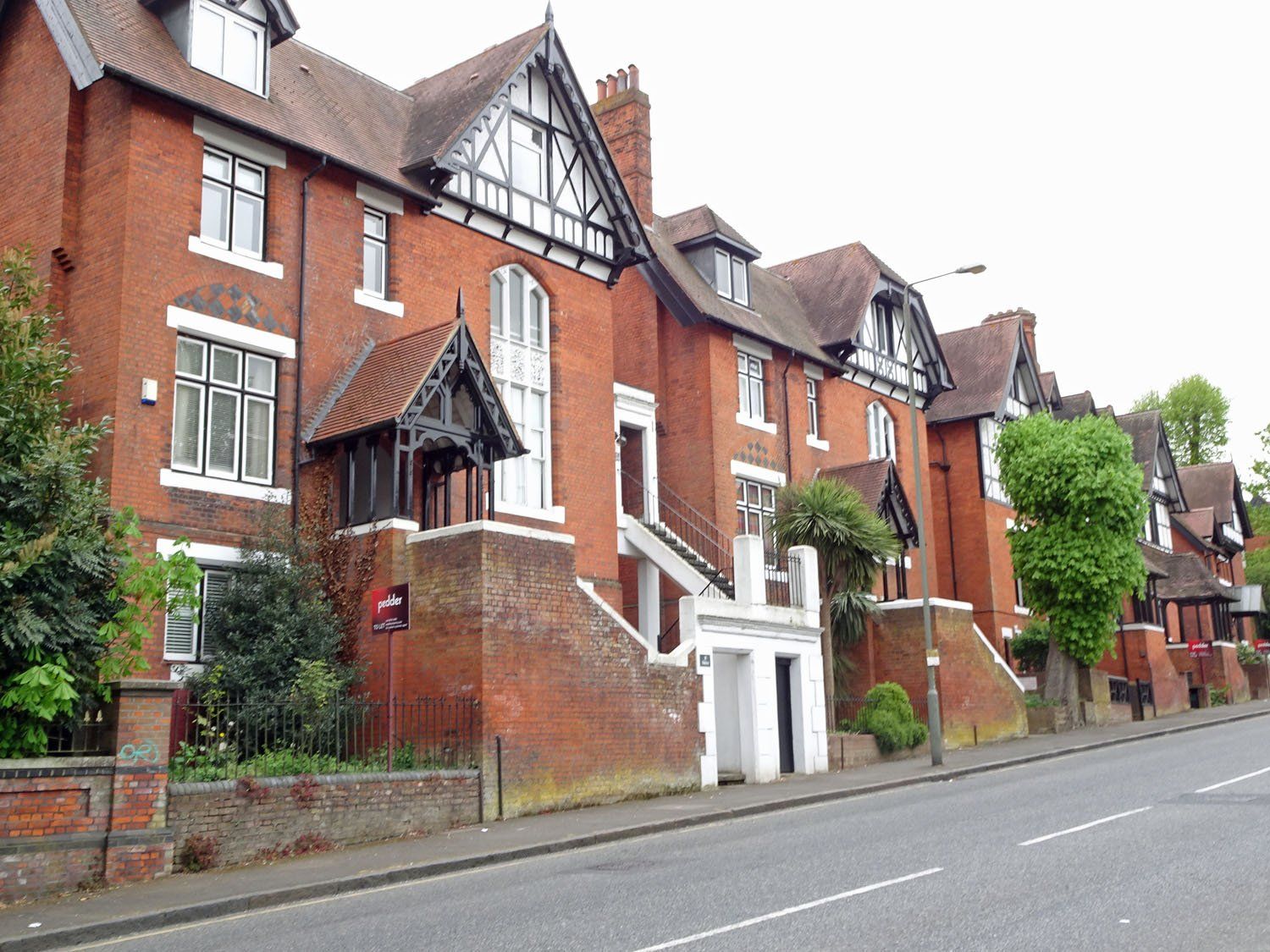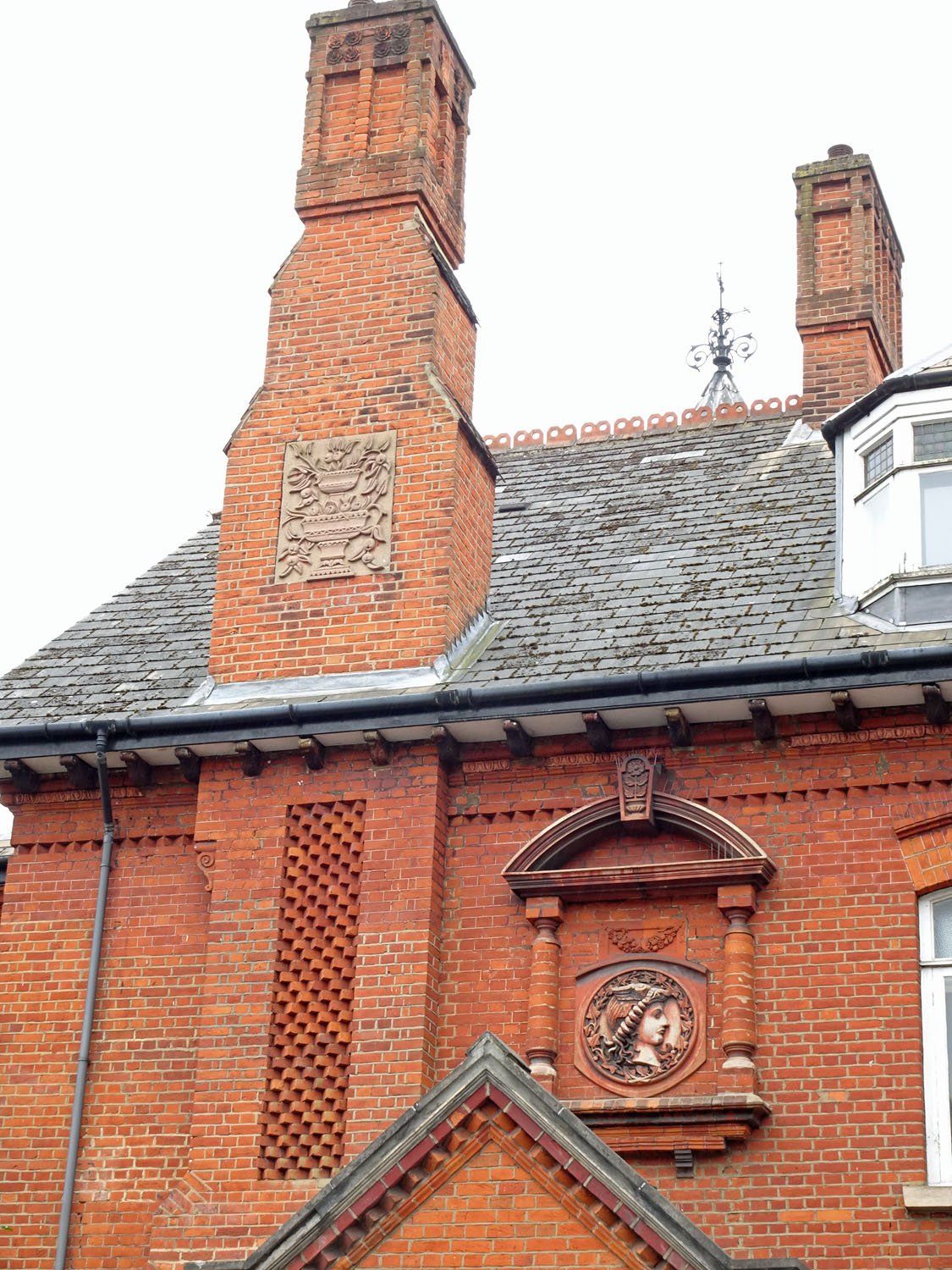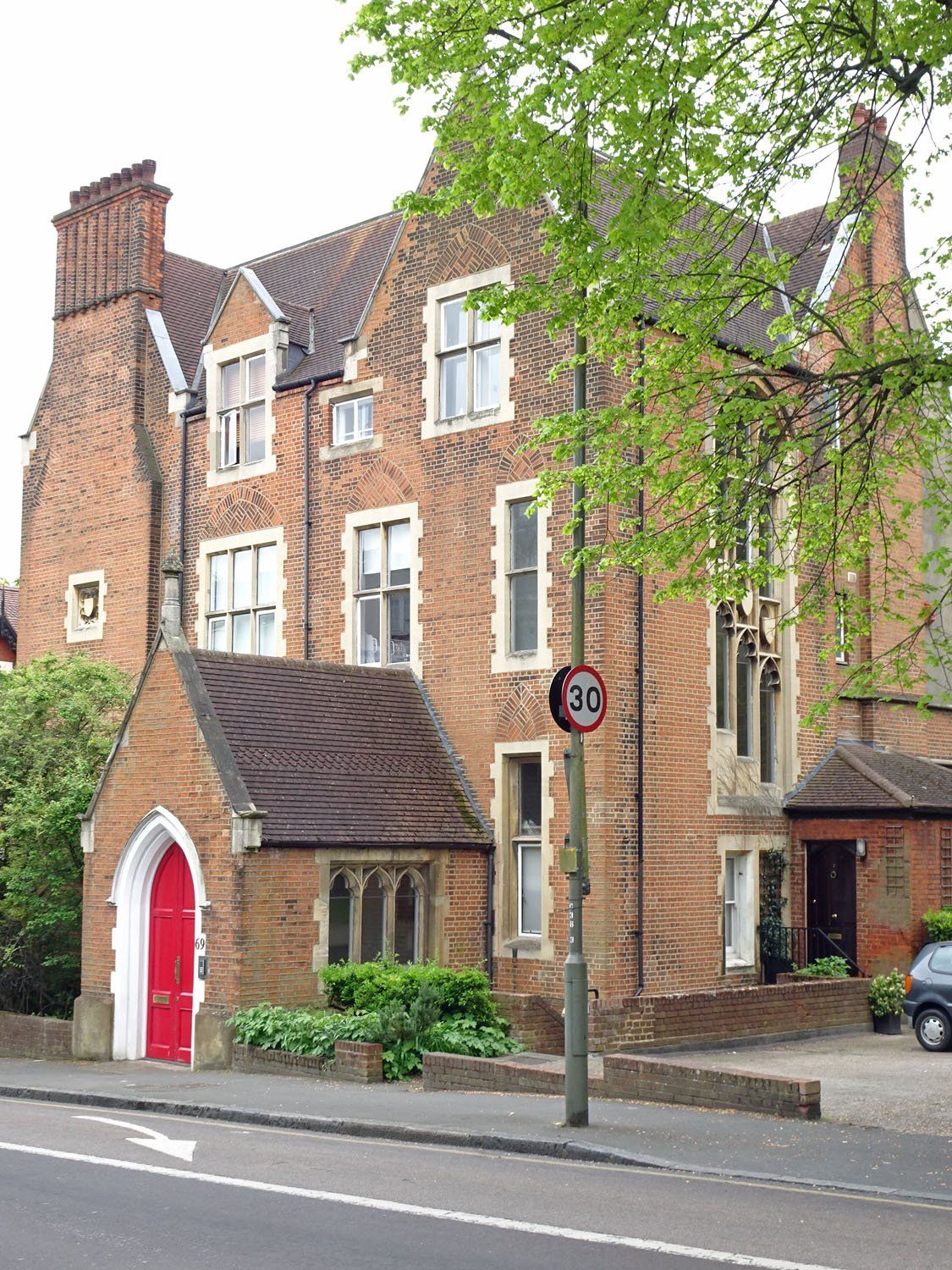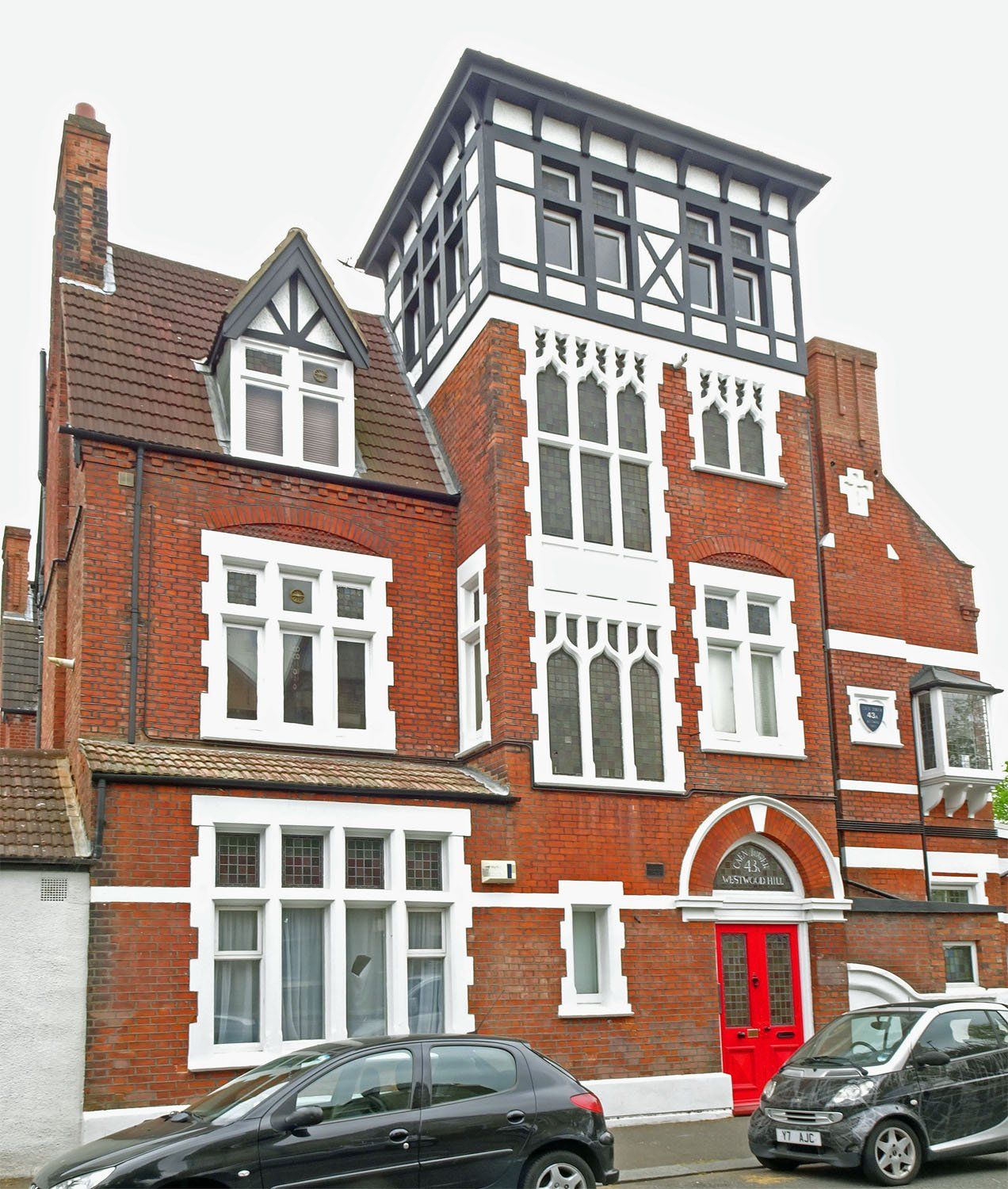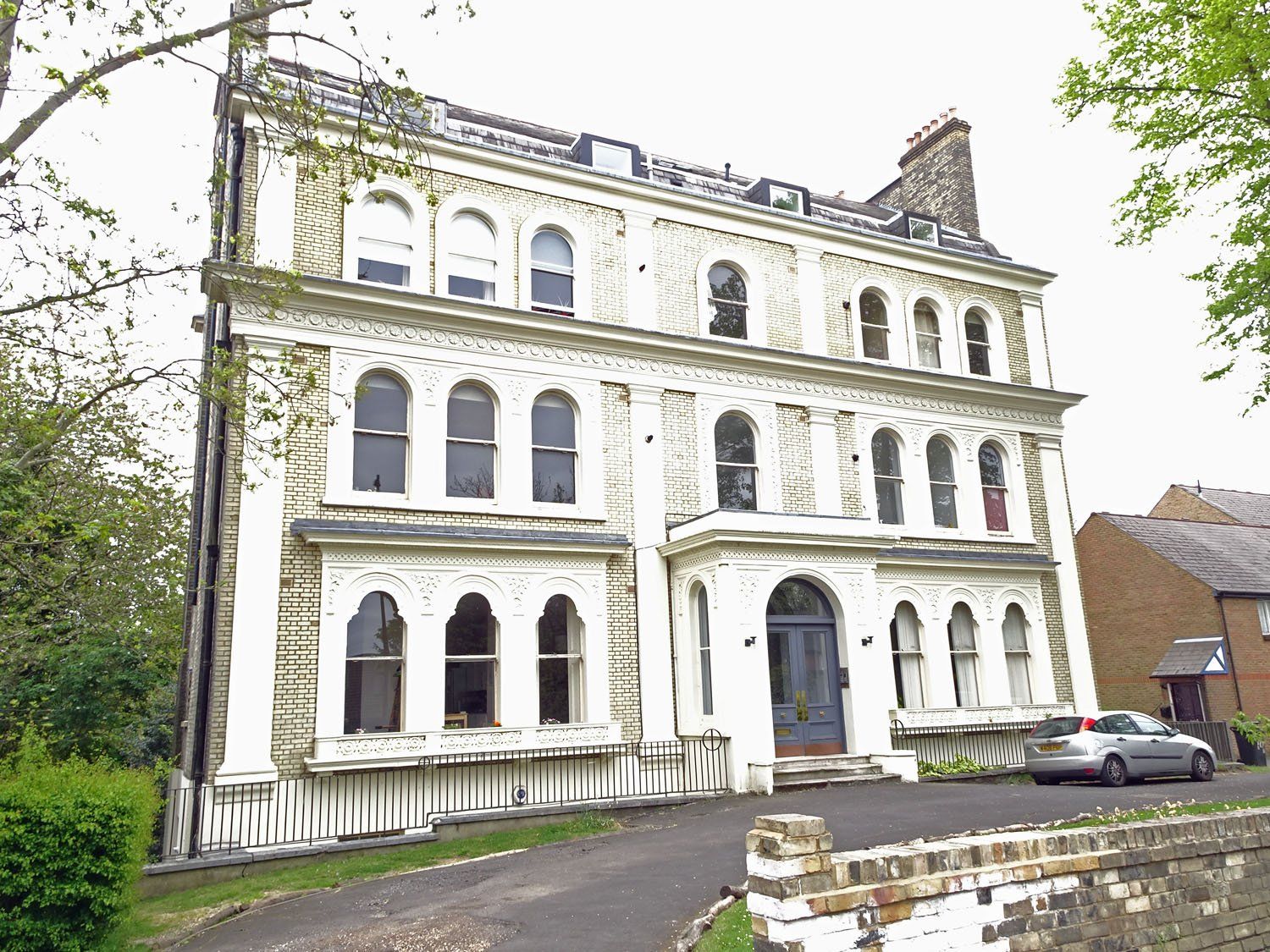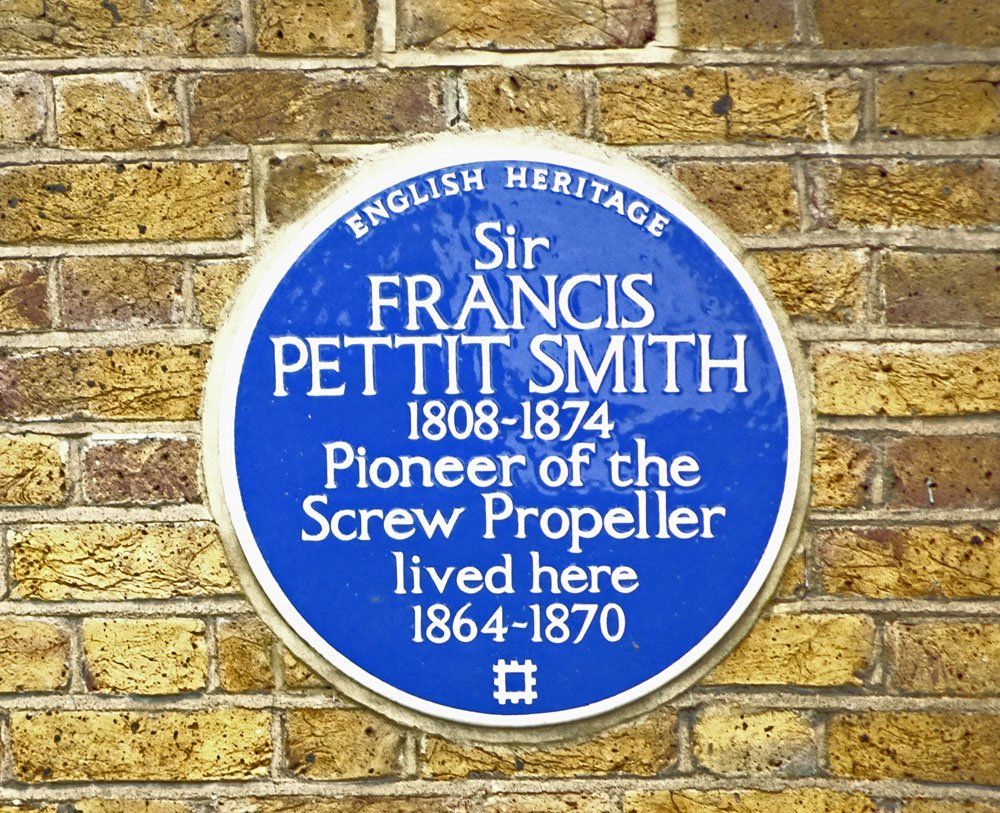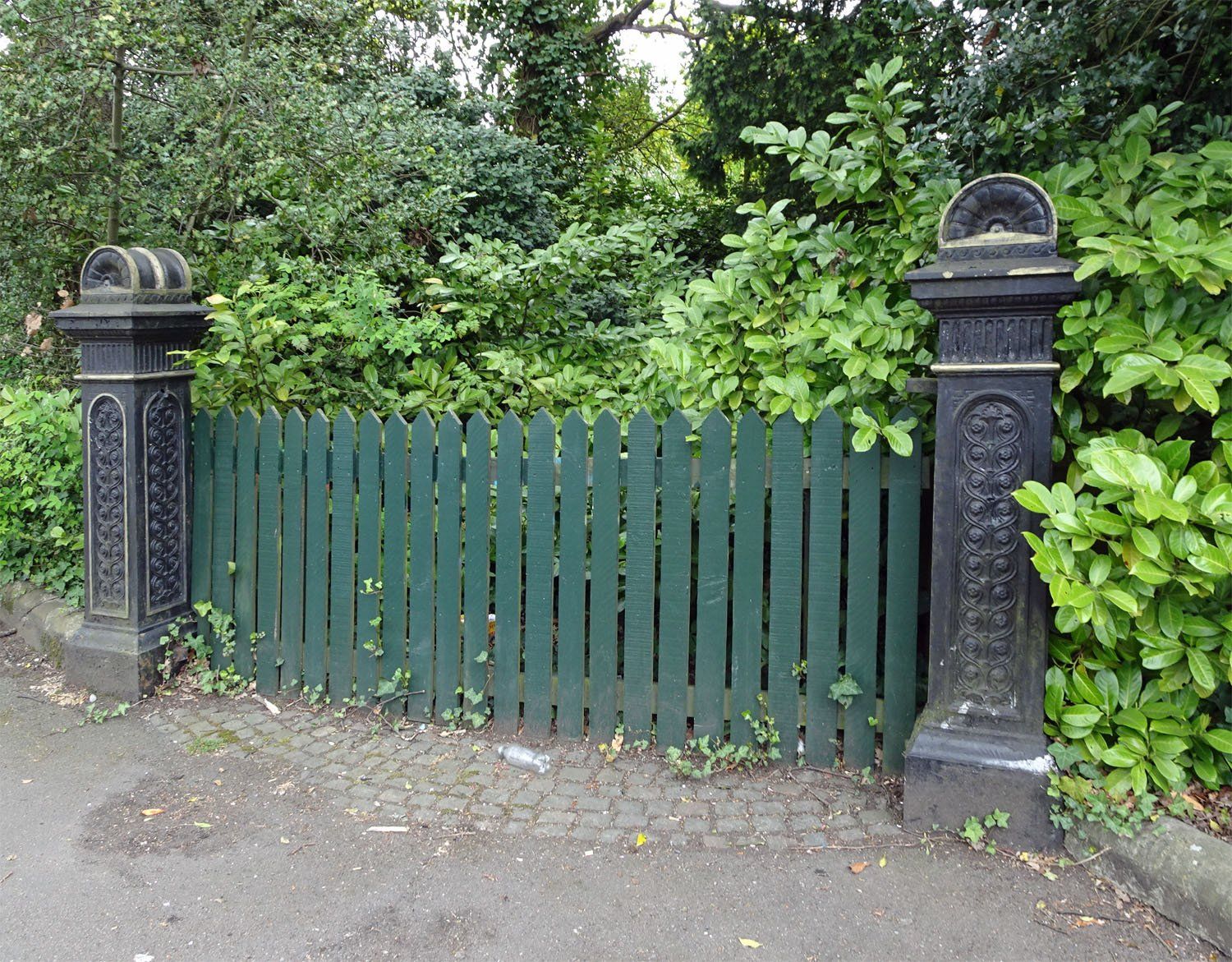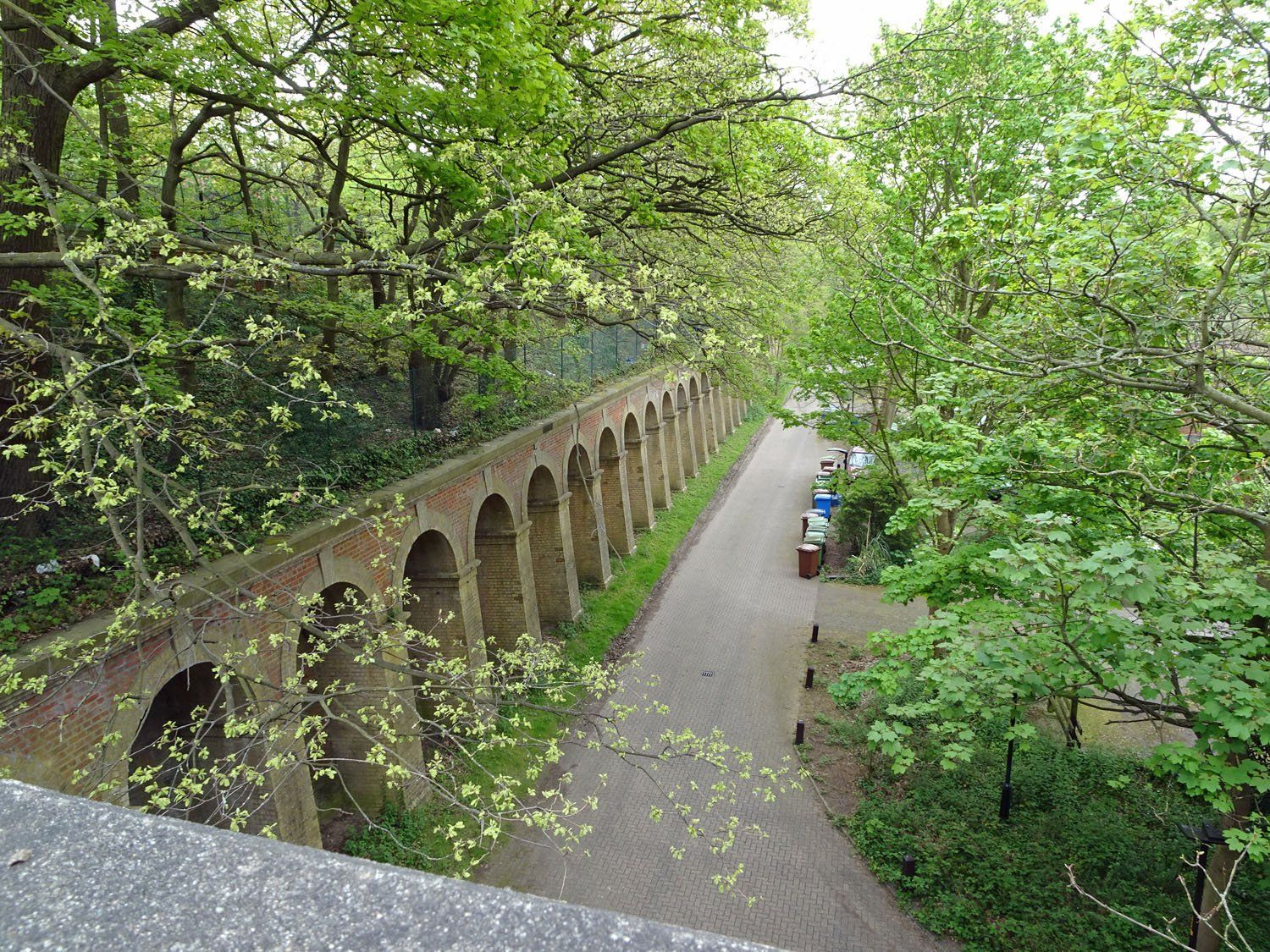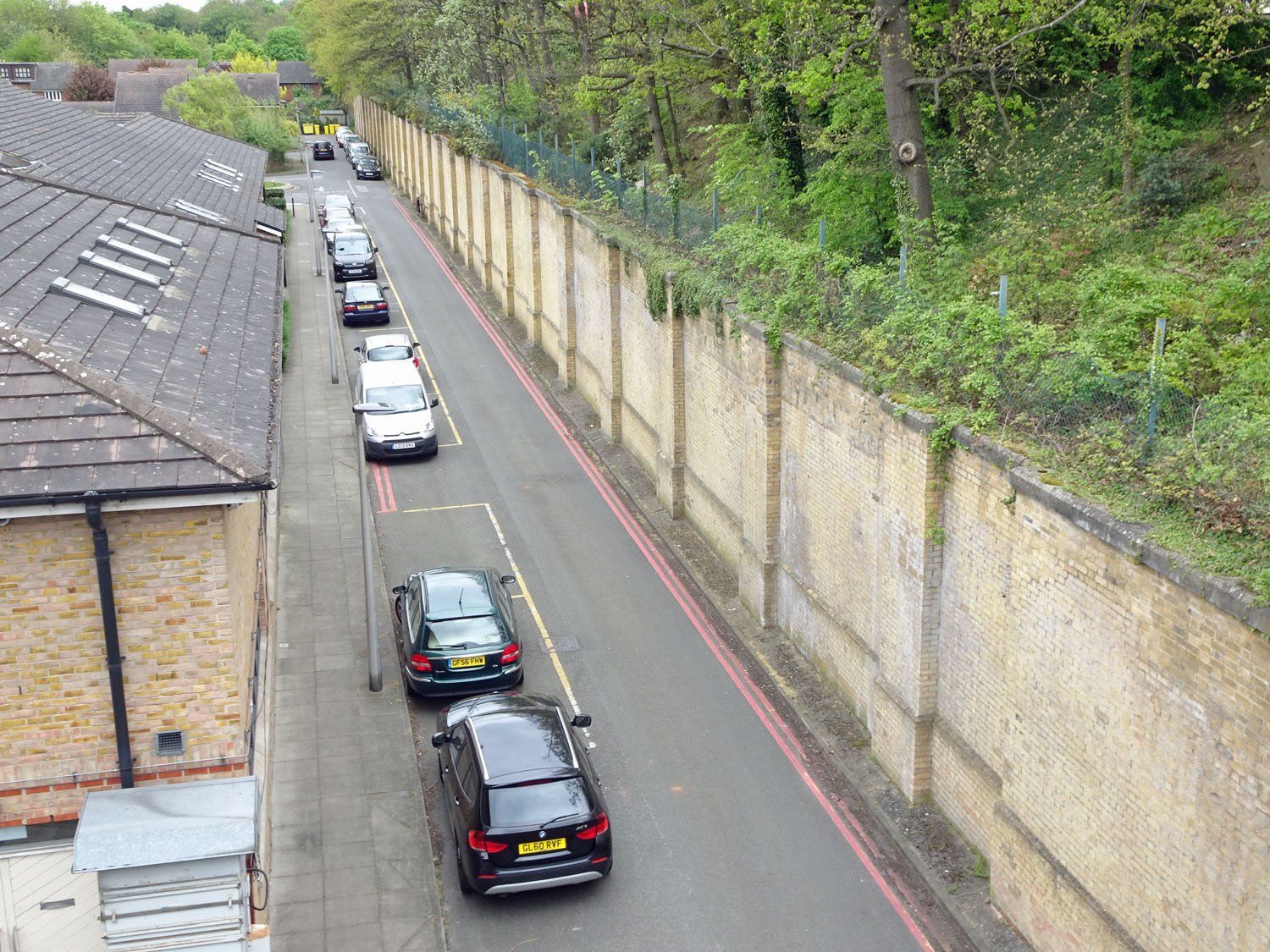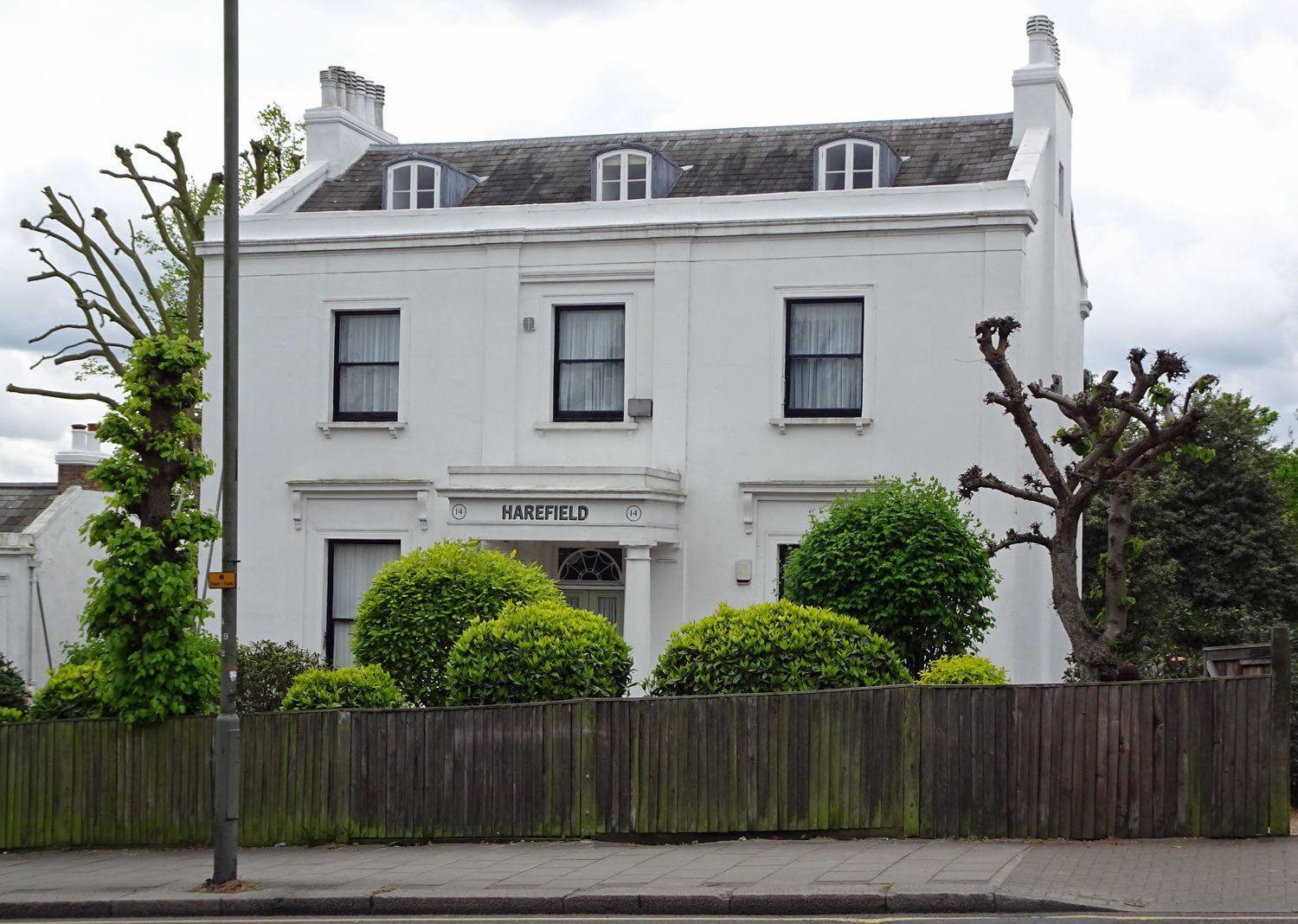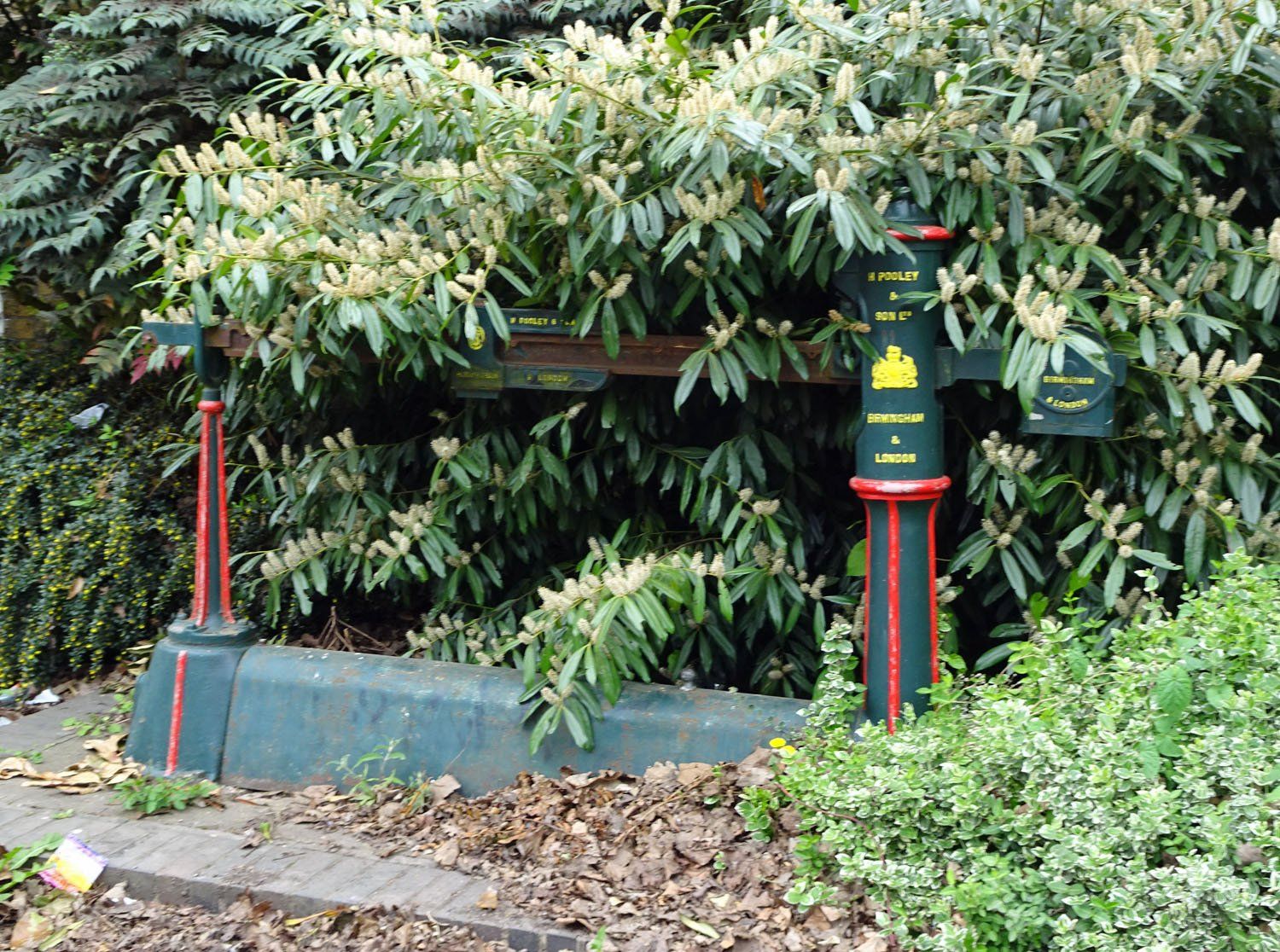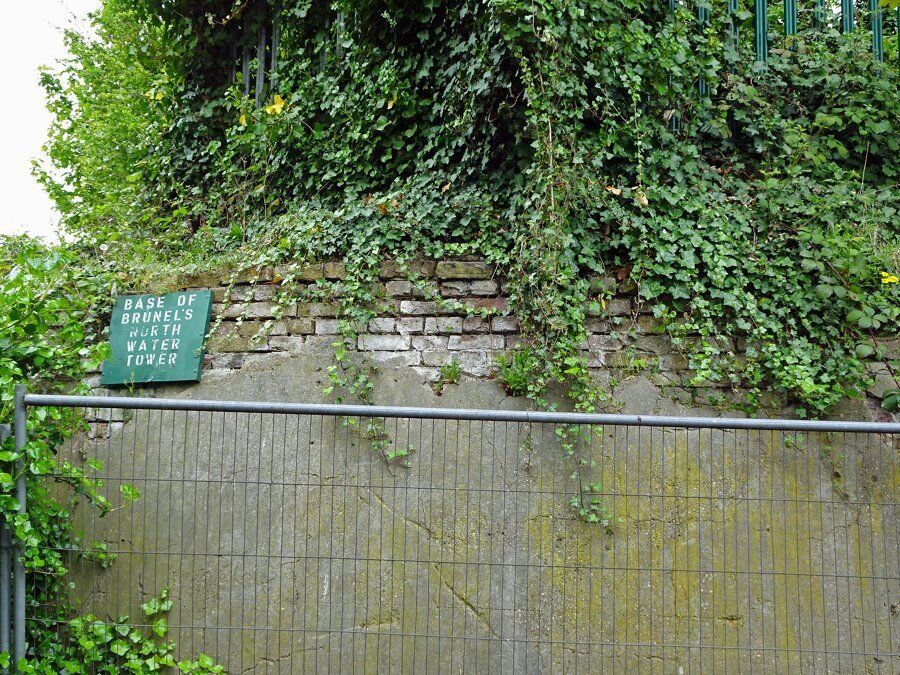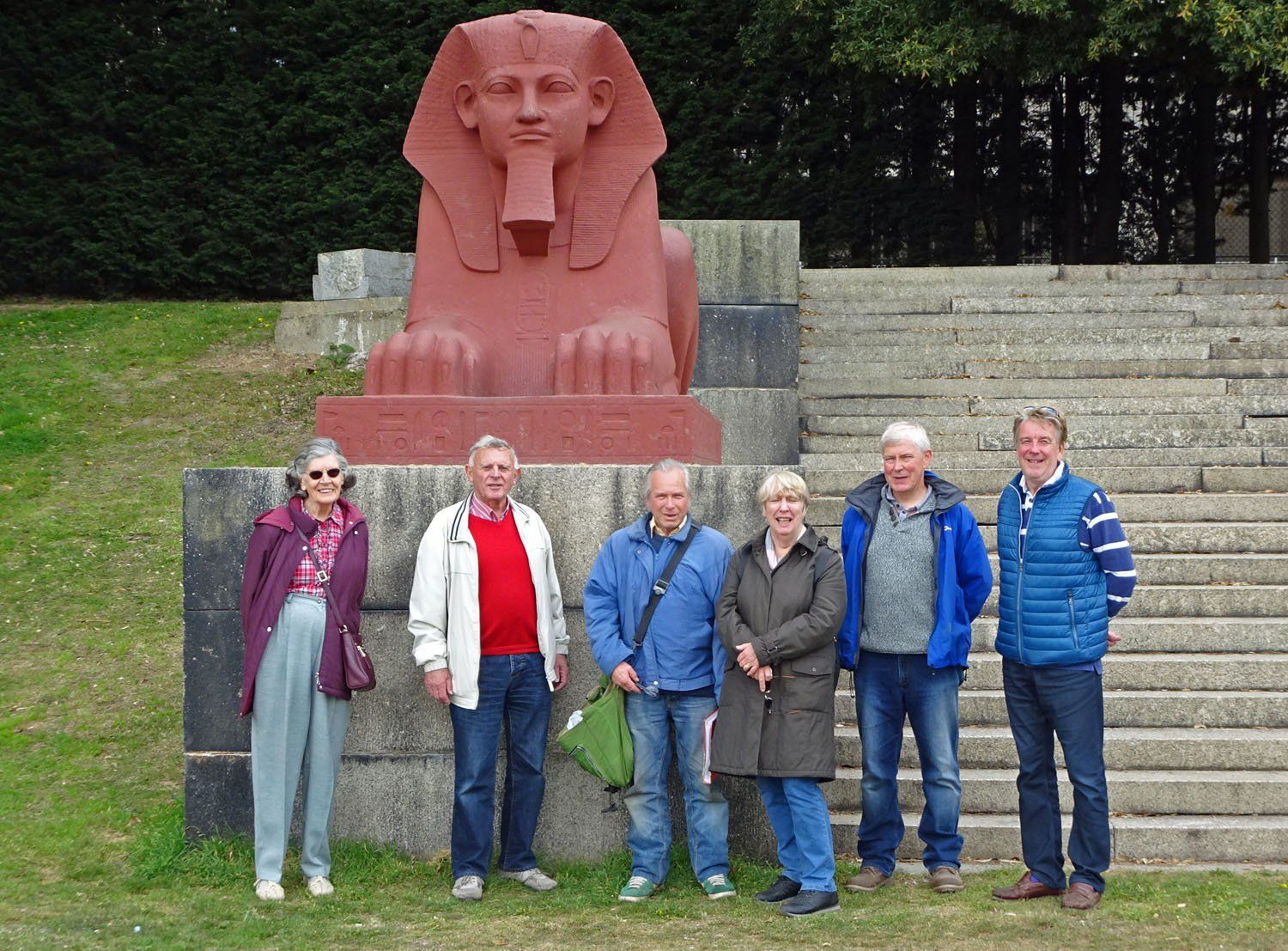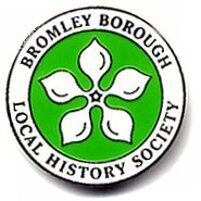Under the expert guidance of local author and historian Alan Cheesman, a small group of Members assembled at the lower end of the Park, near the now closed cafe (due to be demolished because of asbestos problems) for an extended tour round the area which started with the outside of the Park. After briefly examining the site of the 1864 pneumatic railway near the Penge gate (seen in this old print), we moved into Thicket Road where ahead of us we could see the main London Bridge to Croydon railway line, once the site of the Surrey Canal, the road artifically dipping under the bridge to give sufficient headroom for modern traffic.
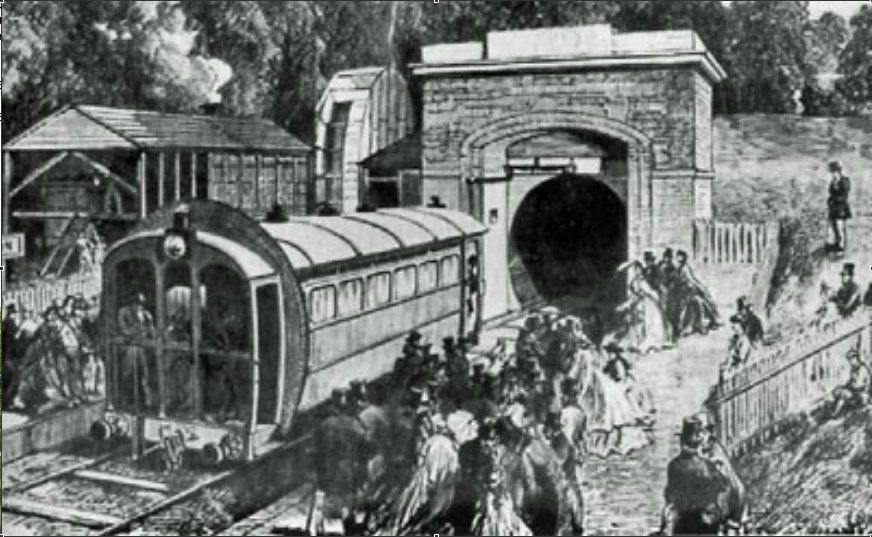
We then turned into Crystal Palace Park Road:
In order to recoup some money, land on the edge of the Park was sold off for development during the 1870s and 1880s.
The asymmetric Arts and Crafts style is apparent but clearly many of the houses (the cheaper ones!) were built around some basic designs and then given detail differences such as the roof and porch shapes.
John Norton was the architect for most of them which today have been adapted as multiple dwellings.
Continuing up the hill, the houses become bigger and even more decorated (and no doubt more expensive!).
Although both sides of the road have houses of historical interest, a more modern de-velopment can be found half way up the road on the opposite side to the park. The Chulsa Estate is unusual in that all the blocks of flats are named after local WW2 air raid wardens, members of the ARP.
Just outside the Bromley Borough boundary is this house in Charleville Circus, although its official address is Caen Tower, 43 Westwood Hill.
Once a girls' school, it was threatened with demolition in the 1960s but happily survived and has obviously taken on a new lease of life.
Just to the left of this picture, the Penge railway tunnel runs underneath. Allegedly an old tunnel vent can be found in one of the gardens but it is not known which one.
Nearer the lower end of the hill is Sydenham Avenue which is separated from Laurie Park Avenue by the splendid Boundary Oak. In the distance can be seen St. Bartholmew's Church, a view made famous by Camille Pissarro when he was lodging in a house in nearby Westow Hill in the 1870s.
This rather sad sewer pipe can also be found in Sydenham Avenue - see here for other examples!
At the north end of the Park can be found Sydenham Hill which includes this splendid 1861 house.
Nearby is another house once inhabited by Sir Francis Smith who, by some reckonings, invented the screw propeller.
Almost directly opposite Sydenham Hill is an overgrown gate which marks the entrance to the site of one of the most important houses around the Park. "Rockhills" was the home of Sir Joseph Paxton from 1852 to his death in 1865. As the designer of the Crystal Palace, he was well placed to supervise its early days. A plaque commemorating his time there can be found on the wall in Westow Hill.
Much of the former garden is now used by the Caravan Club.
A short way along Crystal Palace Parade from the entrance to "Rockhills" can be seen a short stretch of the original Park fence. This ironwork has managed somehow to survive the great fire in 1936, being melted down during WW2 for the war effort and the depredations of unscrupulous scrap metal merchants in recent years.
On the other side of Crystal Palace Parade is the space where the High Level Station was constructed in 1865 to cope with the number of passengers attending events at the Palace (and to compete with the Low Level station). Today, from above the old tunnel which took the line on its route to Nunhead, all that can be see are the old retaining walls.
A large and ornate station was built next to Farquar Road from which this picture was taken.
On the south west side of the Park, was Westow House (now a pub and reduced by one storey from the original building) and the Crystal Palace Hotel (now the Grape and Grain) which extended along Church Road.
Just down Anerley Hill, opposite what is now the museum, is Harefield House (above) built around 1840 by Viscount Harefield.
Behind the museum, and inside the Park, is an old weigh bridge.
Crystal Palace Park had many powerful fountains fed by the two water towers on either side of the Palace. The south tower was badly damaged in the 1936 fire and demolished shortly afterwards. However, some of the orginal pipework can be seen and the base entered via a small (locked) door in the right background.
The north tower was blown up in 1941 apparently because of concerns it could be used as an enemy navigation aid, but it still provides a better idea of their construction and the design by I.K. Brunel whom Paxton consulted on how to feed his large fountains.
We then proceeded along the middle terrace to look at one of the newly repainted sphinxes.
Unfortunately I was unable to remain with the group who then continued through the Park, but for an idea of what they saw, have a look at our 2015 tour.
My thanks to Alan for a most interesting tour.
